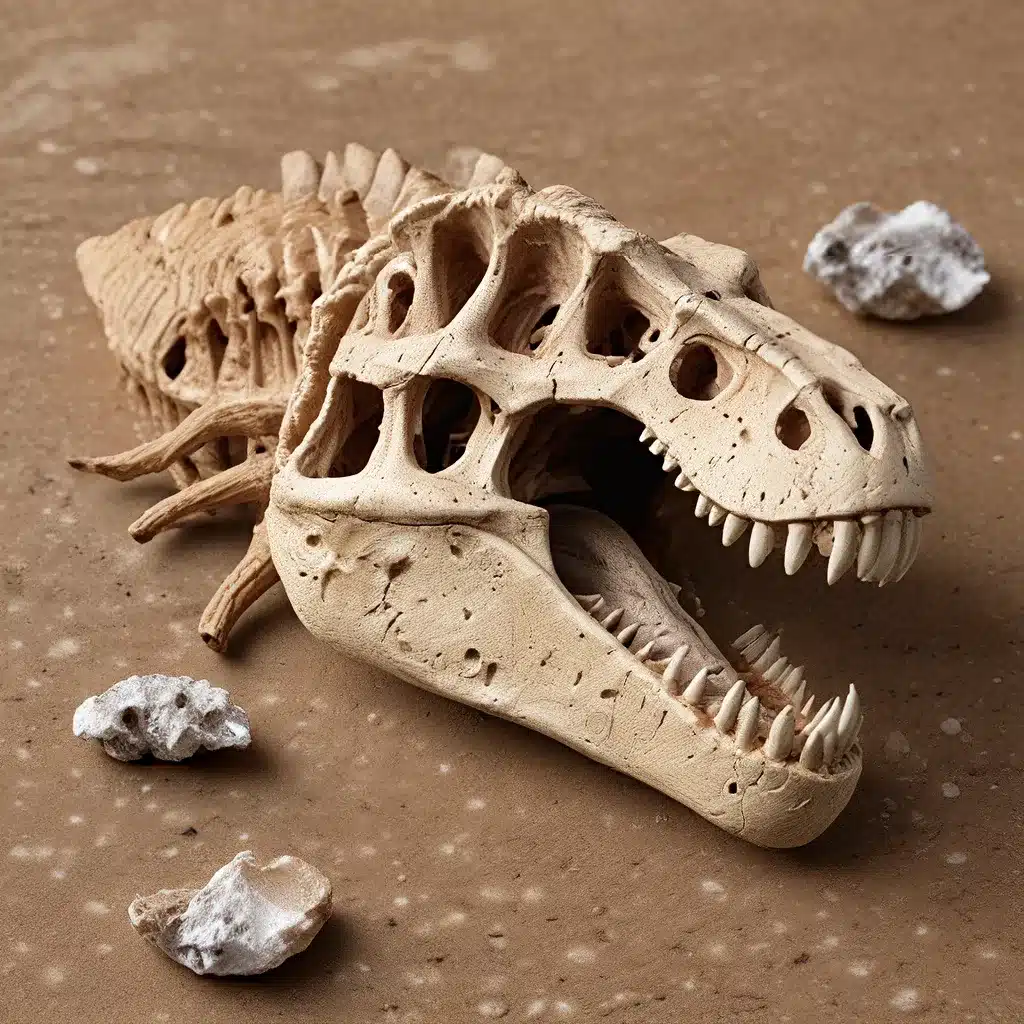
The vast and awe-inspiring landscapes of Utah have long been a treasure trove for paleontologists and dinosaur enthusiasts alike. Nestled in the heart of the American West, this rugged and geologically diverse state has revealed countless prehistoric wonders, shedding light on the ancient creatures that once roamed the Earth.
One of the most significant archaeological discoveries in Utah’s history is the Hanksville-Burpee Dinosaur Quarry, located just 10 miles northwest of the small town of Hanksville. This active excavation site has yielded thousands of pounds of dinosaur bones, offering a remarkable glimpse into the Jurassic period, a time when the landscape looked vastly different from today.
Uncovering the Mysteries of the Jurassic
The Hanksville-Burpee Dinosaur Quarry sits atop the Morrison Formation, a geological layer that dates back to at least 145 million years ago. During this time, the region was home to a lush, green landscape, with rivers cutting through forests of ginkgo trees and ferns. It was also the domain of some of the largest animals to have ever walked the planet, including the iconic Stegosaurus, the long-necked Apatosaurus, and the fearsome Allosaurus.
In 2007, a team from the Burpee Museum of Natural History in Rockford, Illinois, expressed interest in organizing an excavation in the area, and Utah state paleontologist Jim Kirkland knew exactly where to take them. Upon arriving at the site, the team almost immediately began uncovering fossilized bones protruding from the ground, setting the stage for a series of remarkable discoveries.
A Paleontological Expedition Unfolds
Over the following summers, the Burpee Museum’s team returned to the Hanksville-Burpee Dinosaur Quarry, embarking on what they called the “Jurassic Journey” – a three-week volunteer field expedition. Their efforts have yielded the remains of at least seven dinosaurs, including complete skeletons, as well as a trove of fossilized freshwater clams, snails, and plants.
The researchers’ analysis of these findings has led them to a fascinating theory: the area was once home to an ancient braided river system, with a bend in the waterway that collected the remains of animals that had died nearby before being washed downstream. This unique geological feature helped preserve these incredible prehistoric artifacts for millions of years.
The Burpee Museum’s Ongoing Efforts
The Burpee Museum’s summer volunteer digs at the Hanksville-Burpee Dinosaur Quarry have become an annual event, with the team often discovering hundreds of pounds of dinosaur bones from at least five different species by the end of each season. Even for those who can’t join the expedition, the 10-acre site, which is located on federal land administered by the Bureau of Land Management, is open to the public for exploration.
When the Burpee Museum’s paleontological team is at work, visitors can take a free tour of the quarry led by an expert, offering a unique opportunity to witness a working archaeological dig in action. And even when the researchers aren’t present, the site’s striking copper-colored rock and expansive vistas can still spark the imagination, transporting visitors back to the lush Jurassic landscape of the distant past.
Uncovering More Than Just Bones
The Hanksville-Burpee Dinosaur Quarry is just one of the many remarkable archaeological sites that have been discovered in Utah, a state that has long been recognized as a hub for prehistoric exploration and discovery. From the Cleveland-Lloyd Dinosaur Quarry in Jurassic National Monument to the Central Utah Prehistoric Museum in Price, the region has become a veritable mecca for those fascinated by the mysteries of the ancient world.
The Lost Kingdoms, a blog dedicated to the exploration of ancient civilizations and archaeological wonders, has delved deep into the rich history of Utah’s paleontological landscape. Through in-depth articles and captivating narratives, the site has highlighted not just the awe-inspiring fossils that have been unearthed, but also the dedicated scientists and volunteers who have made these discoveries possible.
Exploring Utah’s Prehistoric Wonders
For those seeking to uncover the secrets of the Jurassic era, Utah offers a wealth of opportunities. Whether it’s joining the Burpee Museum’s “Jurassic Journey” expedition, visiting the Cleveland-Lloyd Dinosaur Quarry, or exploring the impressive collections at the Central Utah Prehistoric Museum, the state’s abundance of archaeological treasures is a testament to its enduring significance in the world of paleontology.
Beyond the excavation sites, Utah’s diverse landscapes, from the Wasatch Mountains to the San Rafael Swell, provide a stunning backdrop for prehistoric exploration. Visitors can immerse themselves in the ancient past, imagining the lush forests, raging rivers, and towering dinosaurs that once roamed these lands, now preserved in the form of fossilized remains and captivating geological formations.
As we continue to unravel the mysteries of the Jurassic era, Utah’s role as a hub of archaeological discovery will only become more prominent. The state’s commitment to preservation and education ensures that these prehistoric wonders will be shared with generations to come, inspiring a deeper appreciation for the world that existed long before our own.


